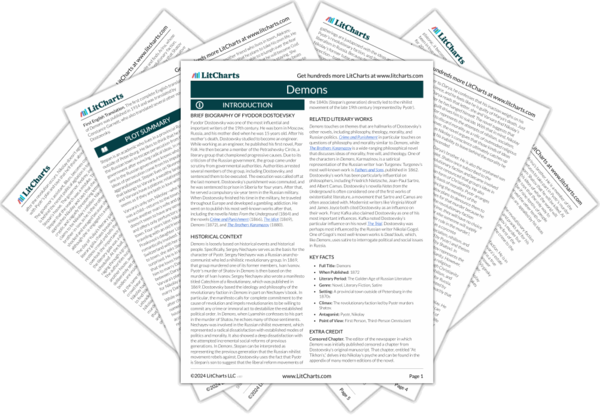Icons—depictions of religiously significant people or scenes, often painted on wood and venerated—symbolize Russia’s connection to its religious and, in Dostoevsky’s view, moral history. In several instances, members of Pyotr’s revolutionary faction and those with sympathetic views break or destroy religious icons. In one case, a second lieutenant in the military throws two icons from his landlady’s window and destroys another with an axe. He’s then arrested with several revolutionary manifestos on him. The lieutenant’s decision to break the icons, then, represents the revolutionary faction’s attempts to break the hold that Christianity has over Russia. In Dostoevsky’s view, that also means abandoning morality, as Dostoevsky contends that religion and morality are inextricably linked. In another instance, Fedka and another person steal an icon of the Virgin Mary from a shrine and replace it with a live mouse. People in town view the mouse as particularly sacrilegious. Fedka’s actions show again how the revolutionary faction destroys or steals icons as a way to destabilize the town and chip away at the townspeople’s connection to Russia’s religious history. Ultimately, the revolutionary faction hopes that if they wear down townspeople’s connection to religion, those people will more readily accept the tenets of their revolutionary ideology.








